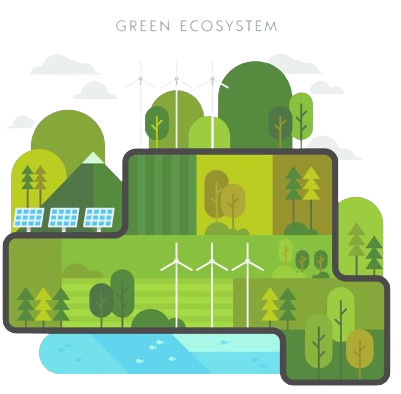Green IoT is more than a concept; it’s a necessity for building a connected world that is sustainable and environmentally responsible. Through innovations in energy efficiency, renewable energy integration, and optimized data management, Green IoT solutions are reshaping the landscape of connected devices.
In an era dominated by technological advancements, the Internet of Things (IoT) stands out as a transformative force. However, with this wave of innovation comes a responsibility to ensure that the connected world is sustainable and environmentally conscious. This blog explores the concept of Green IoT and the solutions that drive sustainability in our interconnected landscape.
Understanding Green IoT
- Connecting Sustainability and IoT
It is an intersection where the efficiency of connected devices meets environmental responsibility. It involves leveraging IoT technologies to create solutions that not only enhance connectivity and efficiency but also minimize the ecological footprint of IoT infrastructures.

- The Pervasiveness of IoT
As IoT devices become ubiquitous, ranging from smart home appliances to industrial sensors, the environmental impact grows. It emerges as a response to this impact, introducing practices and technologies to ensure that IoT contributes positively to environmental sustainability.
Key Components of Green IoT Solutions
-
Energy-Efficient Devices
It begins with the devices themselves. Manufacturers are now focusing on creating energy-efficient IoT devices, optimizing power consumption without compromising functionality. This not only reduces the carbon footprint but also leads to cost savings for businesses and consumers alike.
- Renewable Energy Integration
To truly make IoT green, the energy sources powering these devices must be sustainable. Integration with renewable energy sources, such as solar or wind power, ensures that the operation of IoT infrastructure aligns with eco-friendly principles.
- Optimized Data Management
Data generated by IoT devices can be substantial. It emphasizes the importance of efficient data management to minimize energy consumption in storage and processing. This includes implementing edge computing and other strategies to process data closer to the source, reducing the need for extensive data center operations.
Benefits of Green IoT Solutions
- Reduced Carbon Footprint
This solutions contribute to a significant reduction in the carbon footprint associated with connected devices. This is achieved through energy-efficient devices, sustainable energy sources, and streamlined data management practices.
- Cost Savings
Beyond the environmental benefits, It translates into cost savings. Energy-efficient devices lead to lower operational costs, and the integration of renewable energy sources can provide long-term financial advantages.
Challenges and Innovations in Green IoT
- E-Waste Management
As the number of IoT devices grows, so does electronic waste. Managing the disposal and recycling of these devices poses a challenge, and innovators are exploring sustainable materials and designs to address this concern.
- Continued Research and Development
The field of Green IoT is continuously evolving. Researchers and developers are exploring new technologies and approaches to enhance the sustainability of connected devices further.
Empowering Green IoT Solutions
In the pursuit of sustainable IoT solutions, Tanbits, a leading provider of IoT services, stands at the forefront. Tanbits offers cutting-edge IoT services that prioritize green practices, ensuring that businesses can embrace the full potential of IoT without compromising environmental responsibility.
Conclusion
Green IoT is more than a concept; it’s a necessity for building a connected world that is sustainable and environmentally responsible. Through innovations in energy efficiency, renewable energy integration, and optimized data management, This solutions are reshaping the landscape of connected devices. With Tanbits leading the way in sustainable IoT services, businesses can confidently navigate the path to a greener and more connected future.
BACK










